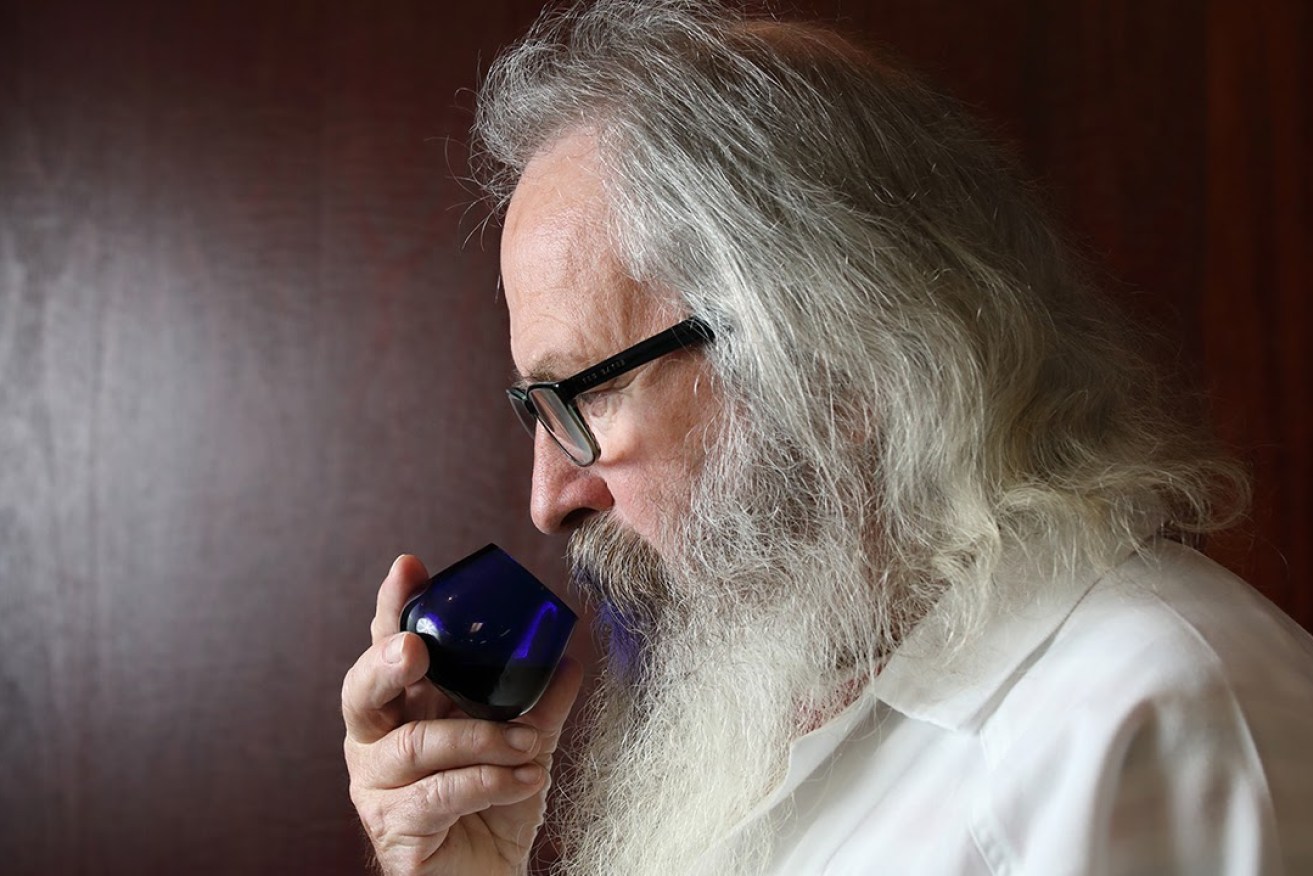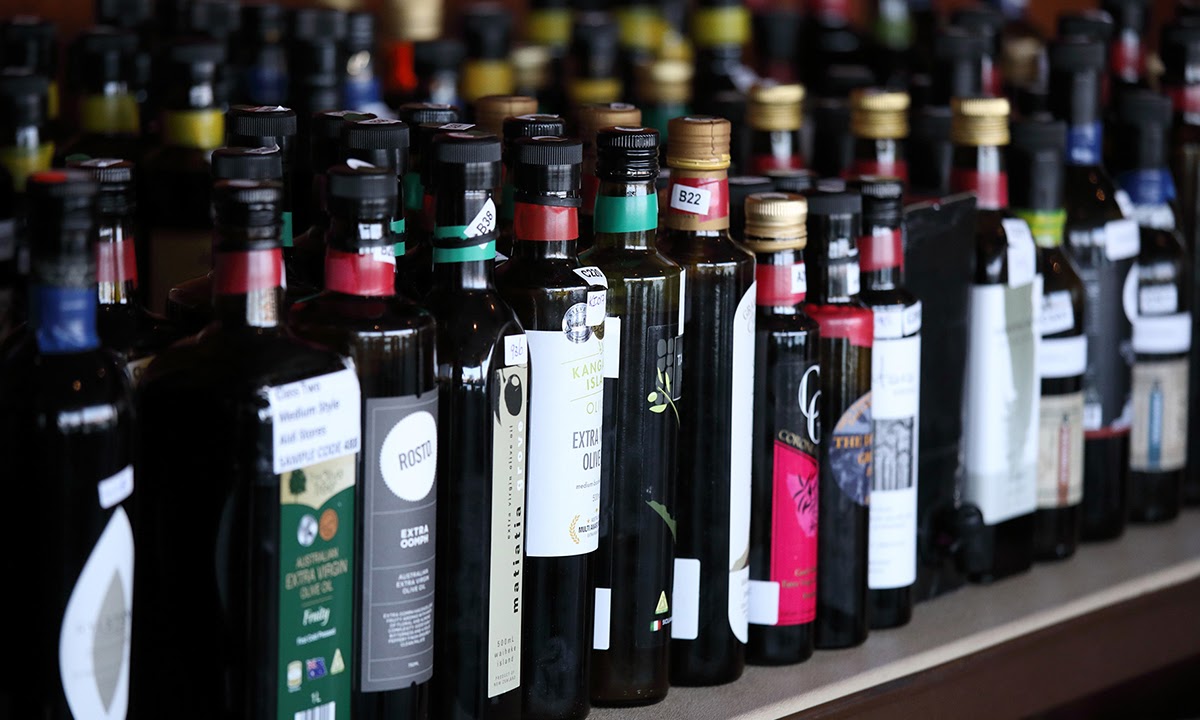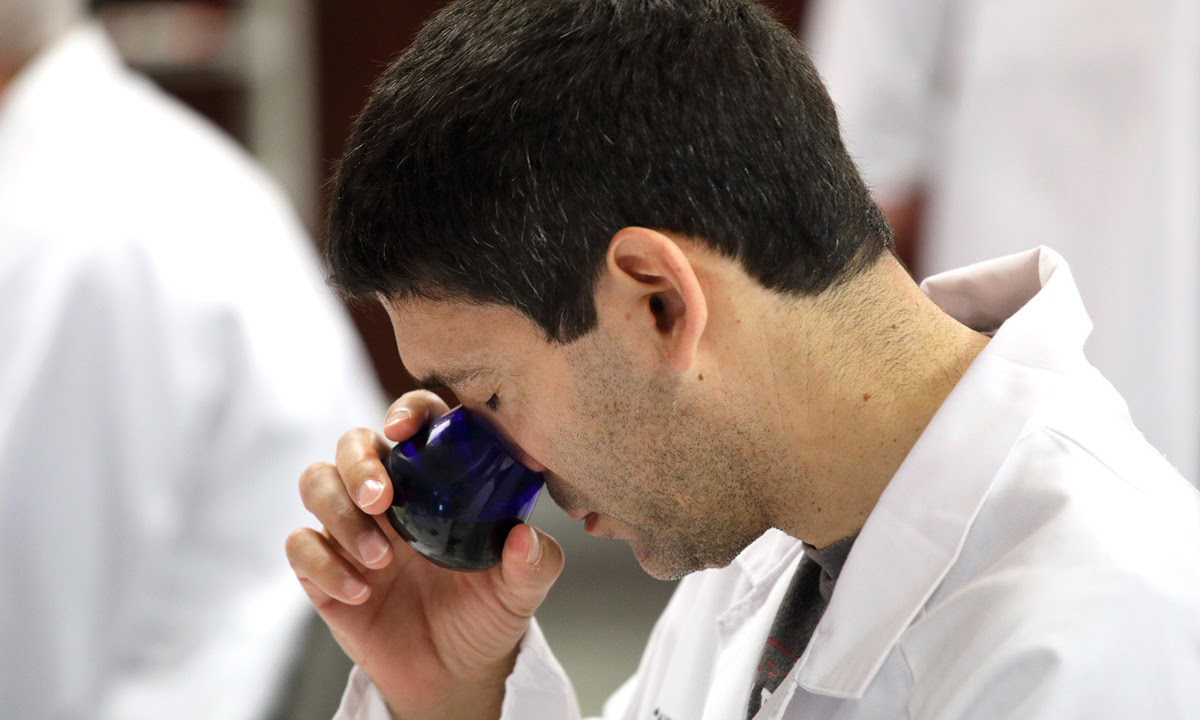How Australian olive oil is taking on the world
When competitors in the inaugural Australian International Olive Awards sat down for dinner in the Adelaide Convention Centre last night, the true state of Australia’s olive oil industry was revealed, writes Nigel Hopkins.

Shane Cummins: We’re actually making really good oil. Photo: Tony Lewis
Although the olive industry has held awards competitions for the past 21 years, this is the first time it has felt confident not just to engage international judges, but also to invite international entries.
It marks a coming of age for an industry which, with olive oil now a staple in most Australian homes, is no longer considered a curiosity nor a marginal agri-business investment.
Back in the early ’90s, when Adelaide’s first comparative tasting of boutique olive oils was conducted in the former Bottega Rotolo premises behind Prince Alfred College, barely a dozen specimens could be collected.
And despite the atmospheric prices being asked – in those days $25 for a 375ml bottle wasn’t uncommon – most of them were probably oxidised or rancid, revealing the primitive handling and extraction methods of the day. None of them probably deserved a medal by today’s standards.
At this year’s judging, held in Adelaide, there were just over 200 Australian entries, far from a complete list of the nation’s olive oil producers, plus a relatively token 10 international entries – none, by the way, from industry giants Italy and Spain, but interestingly including China, Japan, Chile, Argentina and Peru.
Significantly, nearly every extra virgin olive oil entered in this year’s awards was good enough to win a medal, even under the most stringent judging conditions: 65 of them received bronze medals, 94 silver and 40 gold.
“The competition is essentially a benchmarking exercise,” says chairman of judges Shane Cummins.
“In past competitions, the benchmark was probably a bronze medal; now it’s a silver medal. That’s how our standard is increasing.”

Some of the oils competing at the Australian International Olive Awards. Photo: Tony Lewis
It’s not just quality that’s marching upwards, it’s volume, too.
Twenty years ago, with Australian boutique olive oils fetching up to $70 a litre and outpricing even Tuscany’s liquid gold, there were fears that the new boom in olive plantings was so overheated it was bound to go bust, as it had twice previously in the mid-1800s and after World War II.
In 1997, Australia imported 95 per cent of its olive oil consumption, just over 19 million litres, of which less than a quarter was designated “virgin” and much less “extra virgin”. (Australian producers now predominantly make extra virgin oil, which means the fruit is mechanically pressed, has acidity of no more than 0.8 per cent and is not “refined” – it can’t be treated with heat or chemicals.)
That left the door open for substantial import substitution, but industry experts at the time predicted “there is no way we can capture 40-60 per cent of the Australian market in the next 10 years”. “We didn’t,” Cummins says: “It’s just taken us 20 years.”
According to Lisa Rowntree, the awards convener and former CEO of the Australian Olive Association, we now consume around 40 million litres a year and import just half of that – mostly from Italy, Spain and Greece, not all of it extra virgin, and with all imports from the northern hemisphere up to eight months old by the time they get here.
Not only are imported oils therefore not the freshest – when all experts agree the fresher the better – but we almost certainly don’t see their best.
“If you were an Italian or Spanish grower and sold your best olive oil to Australia you’d get hung,” Cummins says. “They keep their best at home.”

Pablo Canamasas at the Australian International Olive Awards. Photo: Tony Lewis
The fresh factor means Australian oils do less well in northern hemisphere comparisons, and vice versa, though at last year’s New York International Olive Oil Competition – the world’s largest – Australian producers walked away with four of the 17 possible “Best in Class” medals, second only to Italy.
“Australia didn’t just enter the olive oil trade,” pronounced the awards website, “they reinvented it and sent shockwaves through the industry. Determined to produce olive oil that is as fresh and nutritious as possible, Australian producers craft some of the most winning brands in the world, while calling out low-quality rivals.”
Australia’s largest olive oil producer, Cobram Estate, which won a best-in-class, two gold medals and a silver in New York, is the most prominent example of what’s right about Australia’s olive oil industry.
“Led by the quality, innovations and global expansion of Cobram Estate, Australian olive oils have arrived on the world stage and are garnering critical acclaim,” the New York competition president Curtis Cord was reported as saying.
Shane Cummins is effusive in his praise for Cobram Estate, whose parent company Boundary Bend farms 2.5 million trees on 6070ha near Mildura. They process more than 75,000 tonnes of olives each year; most of them, Cummins says, progress from tree to oil in less than seven hours.
In Europe, many estates reduce costs by allowing the olives to fall off the tree; the resulting fruit is “swept” and sold to a refinery, where its high acidity is removed.
At an International Olive Council conference in Istanbul in the early 1990s, this writer predicted to the then executive director of that organisation the day would come when Australian olive growers, taking a lead from their compatriot grapegrowers, would have mechanical harvesters stradling the trees, enabling shorter handling times, fresher fruit, and better oil.
The response was dismissive: it would never happen, and with such a source of cheap labour from North Africa, why would Europe need such machines?
Significantly, Boundary Bend is also the manufacturer and service agent for the Colossus olive harvester, which does exactly that, as well as owning two of the world’s top 10 olive oil processing plants with a combined capacity of 95 tonnes of fruit per hour.
We’re not leading the world but we’re not far off it
Cummins says Australia has in the past looked overseas for industry guidance but believes we hold many of the answers ourselves.
“Because of that clean, green image Australia has, because of the mechanisation we have in horticulture and agriculture, because of the quality assurance standards in place, we’re actually making really good oil.
“We’re putting all of those things into practice, and we’re learning the trade and the craft as we go. We looked overseas for a long time, but the answers are not necessarily over there. We’re not leading the world but we’re not far off it.”
That opinion is supported by Pablo Canamasas, an Argentinian regarded as one of the most influential olive processing experts in the world, who has for years consulted with Boundary Bend and was also a judge at the Adelaide competition.
“You’re very lucky in Australia,” he says. “Your average olive oil quality is much better than international standards and you have lots of small producers who have a strong focus on quality.
“You are also very open to new technology and that’s had a major impact on why your olive oil is so good.”
Like our winemakers, Australia’s olive growers are the heretics of the New World, not bound by the traditional ways of doing things and making an oil that is as good as anything in the world, but with its own Australian character.




